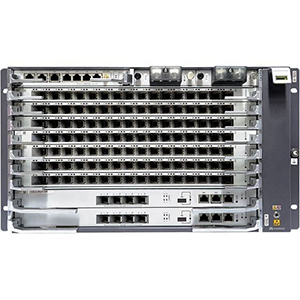As the demand for network bandwidth continues to grow, solving bandwidth bottlenecks has become critical. This article will explore the concept and application of WAN aggregation technology. We will first analyze the factors that lead to the growth of bandwidth demand and explain the importance of solving bandwidth bottlenecks. Next, we will define the basic principles of WAN aggregation and explain its application scenarios.
Then, we will introduce how WAN aggregation is implemented and explain how it increases effective bandwidth. Finally, we will explain the main benefits of WAN aggregation, including increasing network available bandwidth, enhancing link redundancy and reliability, and simplifying network management.
Evolution of Network Bandwidth Demand
Network bandwidth demand continues to grow with the increase in data usage and application complexity. Technologies such as high-definition video, cloud computing, and the Internet of Things are driving the demand for higher bandwidth to support faster data transmission and higher network performance.
Factors leading to the growth of bandwidth demand:
In recent years, the demand for network bandwidth has shown a rapid upward trend, mainly driven by the following factors:
(1) Bandwidth-intensive emerging applications:
- A large number of new data-intensive and real-time interactive applications have emerged, such as virtual reality and remote collaboration.
- These applications have high demands on network bandwidth and put forward higher requirements on network performance.
(2) Popularization of video streaming and cloud services:
- The widespread use of emerging services such as video streaming and cloud computing has continuously increased the demand for network bandwidth.
- These services require the transmission of large amounts of video, images and data, which has put tremendous pressure on network bandwidth.
The importance of solving bandwidth bottlenecks:
In view of the continuous growth of network bandwidth demand, it is of great significance to solve the bandwidth bottleneck problem in a timely manner:
(1) Ensure network performance and user experience:
- Sufficient network bandwidth can ensure the smooth operation of applications and the good user experience.
- Avoid network delays, packet loss and other problems caused by insufficient bandwidth.
(2) Support future business development needs:
- Proactively improve network bandwidth and leave sufficient space for future business development.
- Ensure that the network can continue to meet the growing needs of users and lay the foundation for the development of innovative applications.
In short, with the continuous emergence of new technologies and new applications, the demand for network bandwidth is showing a trend of continuous growth. Timely resolution of bandwidth bottlenecks can not only ensure current network performance, but also provide strong support for future business development, which is crucial to promoting the progress of the information society.
The concept of WAN aggregation
WAN aggregation is the process of merging multiple WAN connections into a virtual link to improve bandwidth, redundancy, and network performance. By aggregating different connection paths, data transmission efficiency is optimized, and network reliability and overall throughput are improved.
Basic principles of WAN aggregation:
WAN aggregation is a technology that combines multiple wide area network (WAN) links. Its basic principles are as follows:
(1) Combining multiple WAN links:
- WAN aggregation aggregates multiple independent WAN lines (such as dedicated lines, Internet, etc.).
- Multiple WAN links share network traffic, improving overall bandwidth.
(2) Improve effective bandwidth utilization:
- WAN aggregation can make full use of the bandwidth resources of multiple WAN links.
- By aggregating the originally scattered bandwidth and using it together, the overall bandwidth utilization of the network is improved.
Application scenarios of WAN aggregation:
WAN aggregation technology is widely used in the following scenarios:
(1) Connection between corporate headquarters and branches:
- Enterprises aggregate multiple WAN links to connect headquarters and geographically dispersed branches.
- Improve the bandwidth and reliability of internal corporate network communications.
(2) Connection between cloud service providers and data centers:
- Cloud service providers use WAN aggregation to connect data centers with users.
- To meet the needs of cloud services with high bandwidth and high reliability.
(3) Dedicated line services provided by operators:
- Operators can provide WAN aggregation services to provide enterprise customers with high-bandwidth and redundant dedicated lines.
- This service ensures the quality of network connection for key business of enterprises.
In short, WAN aggregation technology effectively improves the overall bandwidth and reliability of the network by making rational use of multiple WAN lines, and plays an important role in meeting the needs of various applications such as enterprises and cloud services.
The working mechanism of WAN aggregation
WAN aggregation integrates multiple physical WAN connections into a virtual link and uses load balancing and traffic management technologies to distribute data traffic. It improves bandwidth utilization and network redundancy, ensuring higher network performance and reliability.
WAN aggregation implementation methods:
WAN aggregation can be implemented in the following two main ways:
(1) Static aggregation:
- Multiple WAN links are aggregated together through manual configuration.
- Administrators need to manually allocate network traffic to different WAN links.
(2) Dynamic aggregation:
- Network devices can automatically detect and monitor the status of multiple WAN links.
- Automatically perform load balancing based on the bandwidth of the link to improve overall bandwidth utilization.
How WAN aggregation improves bandwidth:
WAN aggregation improves bandwidth in the following two ways:
(1) Add up the bandwidth of multiple links:
- Aggregate the bandwidth resources of multiple WAN lines together.
- The total bandwidth is equal to the sum of the bandwidths of multiple links.
(2) Flexible bandwidth expansion:
- When business demand increases, the number of WAN links can be simply increased.
- The overall bandwidth can be quickly improved without changing the network topology.
In this way, WAN aggregation technology can significantly increase the available network bandwidth to meet the growing business needs, while improving the reliability and flexibility of the network. In short, WAN aggregation aggregates multiple WAN links in a static or dynamic manner, effectively improving the overall bandwidth resources of the network. This technology is of great significance for enterprise networks and cloud service applications that require high bandwidth and high reliability.
Benefits of WAN aggregation
WAN aggregation technology has the following advantages. The advantages of WAN aggregation include improving bandwidth utilization, enhancing network redundancy, and optimizing data transmission speed and reliability. It provides higher network performance and fault tolerance by integrating multiple connections, reducing the risk of single point failure.
Increasing network available bandwidth:
- By aggregating the bandwidth of multiple WAN links, the overall available bandwidth of the network is greatly increased.
- It can meet the growing demand for high-bandwidth applications such as video streaming and cloud computing.
Enhanced link redundancy and reliability:
- When a WAN link fails, the network device can automatically switch to other available links.
- It improves the fault tolerance and availability of the network and reduces the risk of single point failure.
Simplified network management:
- WAN aggregation technology unifies the management of multiple independent WAN links, simplifying network operation and maintenance.
- Network administrators can monitor and maintain the entire network system more efficiently.
In general, WAN aggregation technology can provide important advantages for enterprise networks and cloud services in the following aspects:
- Greatly improve the overall bandwidth of the network, meet the needs of high-bandwidth applications.
- Enhance the redundancy and reliability of the network, and improve the overall service quality.
- Simplified network management and maintenance, and improved operation and maintenance efficiency.
These advantages make WAN aggregation technology an important choice in the current enterprise and cloud service network construction, which can bring better network experience to users.
Summary
WAN aggregation technology provides an effective solution to bandwidth bottlenecks. Our company has long focused on the research and development and application of network optimization technology and has rich practical experience. We provide powerful WAN aggregation solutions that are widely used in scenarios such as corporate headquarters and branches, cloud service providers and data centers, and operator dedicated line services.
Our WAN aggregation equipment uses industry-leading technical solutions and has achieved excellent levels in bandwidth utilization, link reliability, and management convenience. At the same time, our team of engineers will provide you with professional demand analysis and solution design services to ensure that the deployed WAN aggregation solution can meet your actual needs to the greatest extent. Contact us now to learn more.
WAN Aggregation FAQ
WAN aggregation is a network strategy that combines multiple wide area network (WAN) connections into a single, unified connection. This approach increases bandwidth, enhances redundancy, and improves overall network performance.
WAN aggregation is used to enhance network reliability, increase available bandwidth, and provide failover capabilities. It ensures that if one WAN link fails, the remaining links can continue to provide connectivity, thereby improving network uptime and performance.
By combining multiple WAN links, WAN aggregation allows for load balancing, where network traffic is distributed across all available connections. This helps to optimize bandwidth usage and reduce congestion, leading to better overall network performance.
Common methods include link aggregation (combining multiple links at the data link layer), protocol-based aggregation (using protocols like MPLS), and using dedicated WAN aggregation appliances or routers that manage multiple WAN connections.
Benefits include increased bandwidth, improved network reliability through redundancy, better load balancing across multiple connections, and enhanced performance for applications requiring high data throughput.
Equipment needed includes WAN aggregation routers or appliances, which are capable of managing and combining multiple WAN connections. Additionally, network switches and other routing devices may be used to facilitate the aggregation process.
Yes, WAN aggregation can combine various types of WAN connections, such as DSL, cable, fiber, and satellite, into a single aggregated connection. This allows for a more flexible and efficient use of available network resources.
WAN aggregation itself does not directly affect network security, but it can improve security by providing redundancy. If one link fails, traffic can be rerouted through other secure links, maintaining connectivity and reducing potential security vulnerabilities.
Challenges include the complexity of configuration, managing multiple WAN connections, potential higher costs for aggregation equipment, and ensuring compatibility with existing network infrastructure.
To choose the right WAN aggregation solution, consider factors such as your network’s bandwidth requirements, the types of WAN connections used, budget constraints, and the need for redundancy and load balancing. Consulting with a network specialist or vendor can help determine the best solution for your specific needs.





